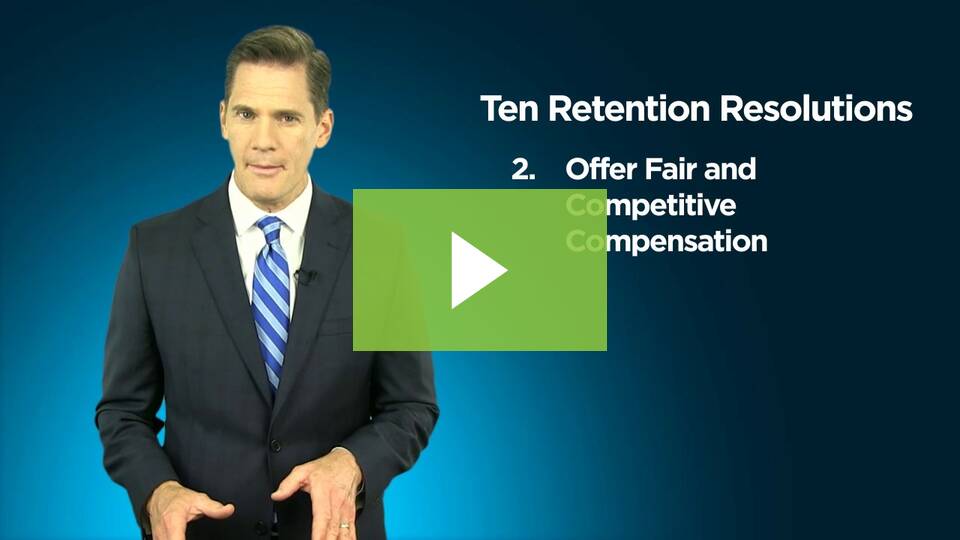5 HR Trends to Monitor in 2022
|
|

Many human resources (HR) functions were quickly reimagined in 2021 due to the COVID-19 pandemic, and HR professionals should continue to expect new challenges in 2022. Here are five HR trends to monitor this upcoming year:
1. Hybrid Workplace Sustainability
Most workplace leaders expect that at least some of their employees will work remotely after the pandemic. As such, many employers will factor in hybrid work when creating or updating workplace policies and processes.
2. Attraction and Retention Amid Labor Shortages
The current labor shortage has been an obstacle for most employers and is likely to continue into the new year. Generally, employees are seeking opportunities that offer better compensation, benefits and flexible work arrangements.
3. Investments in HR Technology
In 2022, many employers will integrate technology into more HR processes or build upon their existing practices. Technologies are being used to create efficiencies and improve processes, such as recruitment, onboarding, and learning and development.
4. Growing Demand for New Skillsets
Desired skillsets vary by organization and industry, but many employers are pursuing high-level digital and communications skills for potential and current employees.
5. Employee Health and Well-being
Employee health and well-being will remain a top concern and priority for both employers and employees. Caregiving, mental health and adjusting to remote work will likely remain top challenges.
Employer Takeaway
As the pandemic evolves, employers will need to innovate and stay on top of trends to meet the needs of employees. Reach out to us today for resources on these topics and other workplace trends.
|
|
Employee Benefit Plan Limits for 2022
|
|

Many employee benefits are subject to annual dollar limits that are periodically updated for inflation. The IRS typically announces the dollar limits that will apply for the next calendar year well before the beginning of that year. This gives employers time to update their plan designs and ensure that their plan administration will be consistent with the new limits.
Although most of the limits will increase for 2022, some of the limits remain the same.
Increased Limits
For plan years beginning on or after Jan. 1, 2022, the following limits have increased:
-
Health savings account contributions:
- Single coverage—$3,650 (up $50)
- Family coverage—$7,300 (up $100)
-
High deductible health plan (HDHP) out-of-pocket maximum limit:
- Single coverage—$7,050 (up $50)
- Family coverage—$14,100 (up $100)
- Health FSA contribution limit—$2,850 (up $100)
- Health FSA carryover limit—$570 (up $20)
- Transportation fringe benefit plan monthly limits—$280 (up $10)
- Employees’ elective deferrals to 401(k) plans—$20,500 (up $1,000)
- Tax exclusion for adoption assistance benefits—$14,440 (up $140)
Unchanged Limits
Certain limits will not change for 2022, including the HDHP minimum deductible and catch-up contribution limits to HSAs or 401(k) plans. The tax exclusion for dependent care FSA benefits also returns to traditional rules.
|
|
EEOC Issues New Guidance on COVID-19 and ADA Disability
|
|

Recently, the Equal Employment Opportunity Commission (EEOC) issued new answers to frequently asked questions (FAQs) about what employers may or may not do to comply with federal fair employment laws during the COVID-19 pandemic. The new FAQs specifically address the definition of “disability” and how to determine whether an individual with COVID-19 meets it under the Americans with Disabilities Act (ADA).
ADA and COVID-19 Background
Under the ADA, employers with 15 or more employees may face liability if they take certain adverse employment actions against individuals who have been diagnosed with or are believed to have COVID-19. The ADA also requires these employers to provide reasonable accommodations for individuals with disabilities, including any related to COVID-19. Smaller employers may be subject to similar rules under applicable state or local law.
Three-Part Definition
The EEOC’s new FAQs clarify that COVID-19 may qualify an individual for ADA protection based on “actual” disability, a “record of” disability or being “regarded as” having a disability. Employers must perform an individualized assessment to determine whether a specific employee’s COVID-19 meets any of these definitions.
Disability Types
COVID-19 is an actual disability if it is a physical or mental impairment that “substantially limits one or more major life activities.” The FAQs provide examples of situations in which an individual with COVID-19 would (and would not) meet this definition.
The FAQs also explain and provide examples illustrating how certain adverse employment actions may violate the ADA even if an individual only had COVID-19 in the past (“record of” disability) or is mistakenly believed to have COVID-19 (“regarded as” having a disability).
|
|
10 Employee Retention Resolutions for 2022
|
|
With a new year upon us, your attention is likely focused on setting financial and productivity goals for your business. As you plan, make sure to look at one area you may have overlooked: employee retention. Employee retention has a huge impact on your bottom line, and now is a great time to make some employee retention resolutions that will pay off all year long. Watch the video below to learn 10 key employee retention resolutions for 2022.

|
|
|
|